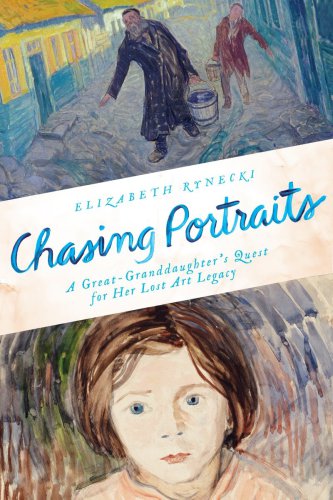
Chasing Portraits
A Great-Granddaughter's Quest for Her Lost Art Legacy
کتاب های مرتبط
- اطلاعات
- نقد و بررسی
- دیدگاه کاربران
نقد و بررسی

August 22, 2016
The author's earnest description of her search for her ancestor's lost art lacks the depth to make it speak to a larger audience. In the fall of 1939, with the Luftwaffe bombarding Warsaw, painter Moshe Rynecki (the author's great-grandfather) packed his life's workâaround 800 images of Jewish life in Polandâinto a half-dozen bundles to be left with friends, "until things settle down." Six years later, Moshe, the friends, and most of the pictures had disappeared. His widow managed to find one cache in a basement; after many ups and downs, it ended up in Northern California, where it inspired the author's quest. The first quarter of the book is based largely on autobiographical vignettes by Rynecki's grandfather George, previously published in 2005 as Surviving Hitler in Poland. The rest of the book follows her stumbling decades-long pursuit of Moshe's lost works. This is not a story of looted art; Moshe's work was not stolen but deserted, in a city that was almost entirely destroyed. She tries to "bring to life" through the awkward device of recreated dialogue. She clearly feels her loss, weeping at each reminder, but had she dug deeper into Warsaw's language, history, and culture, she could have brought Moshe's world to life and made the destruction of it much more affecting for the reader.

Starred review from July 1, 2016
A page-turning personal history of Rynecki's search for her great-grandfather's legacy.Moshe Rynecki (1881-1943) was a Polish artist whose work "detailed the everyday lives of Polish Jews in the 1920s and 1930s." His singular oeuvre shows the culture and quotidian activities of his people, and his very identity was intimately tied to his Jewish heritage, even to the point of following them into the Warsaw ghetto. He was an ethnographically inspired painter and thought abstract styles would detract from the world he was portraying. He and his wife, Perla, operated an art supply store--or she did while he painted. By the time of the Nazi invasion in 1939, he had 800 works that needed to be protected. With his son George's help, he took paintings out of frames, rolled them up, and put them into piles. Moshe also made a list of which pieces went into each pile, but, unfortunately, the list was lost. The works were entrusted to friends to be retrieved after the war. When the Nazis moved the Jews into the ghetto, George refused to take his family, hiding their Jewishness with new identities. Because Moshe would not deny his heritage, he and Perla entered the ghetto. In 1942, George got his mother out, but his father felt that he had to go "where brothers and sisters go. And if it's death, so be it." The last they heard was that he was on his way to a death camp. After the war, Perla found a bundle of more than 100 paintings and gave them to her son, who moved to the U.S with his wife. That much of the story is fascinating, but it's only the beginning, as the author discovers her grandfather's memoir and begins her search for his paintings. A wonderful story beautifully told. Rynecki's yearslong search, successes, frustrations, and failures are a study in perseverance.
COPYRIGHT(2016) Kirkus Reviews, ALL RIGHTS RESERVED.

September 1, 2016
This debut by Rynecki is simultaneously a family history, an exploration of Jewish art destroyed by the Holocaust, and one woman's struggle to understand and redefine her place among family and the world around her. In prose that reads like a novel, the author draws readers into her journey to locate and engage with as much of her great-grandfather's art as possible. Although primarily focused on Rynecki's great-grandfather, a Polish artist who disappeared during the Holocaust, the book is set against the larger backdrop of artists whose work and lives were stolen by the horrific events of World War II, and how their output must endure in order to have a chance at being restored and recognized. Rynecki also reveals how, through the tangible connection of art, the descendants of Holocaust victims and survivors discover their role in family stories and world history. VERDICT This personal and impassioned account will appeal to anyone interested in creativity, art history, the impact of World War II and the Holocaust on modern life, as well as readers curious about genealogy and the power of family stories.--Elizabeth Zeitz, Otterbein Univ. Lib., Westerville, OH
Copyright 2016 Library Journal, LLC Used with permission.

























دیدگاه کاربران